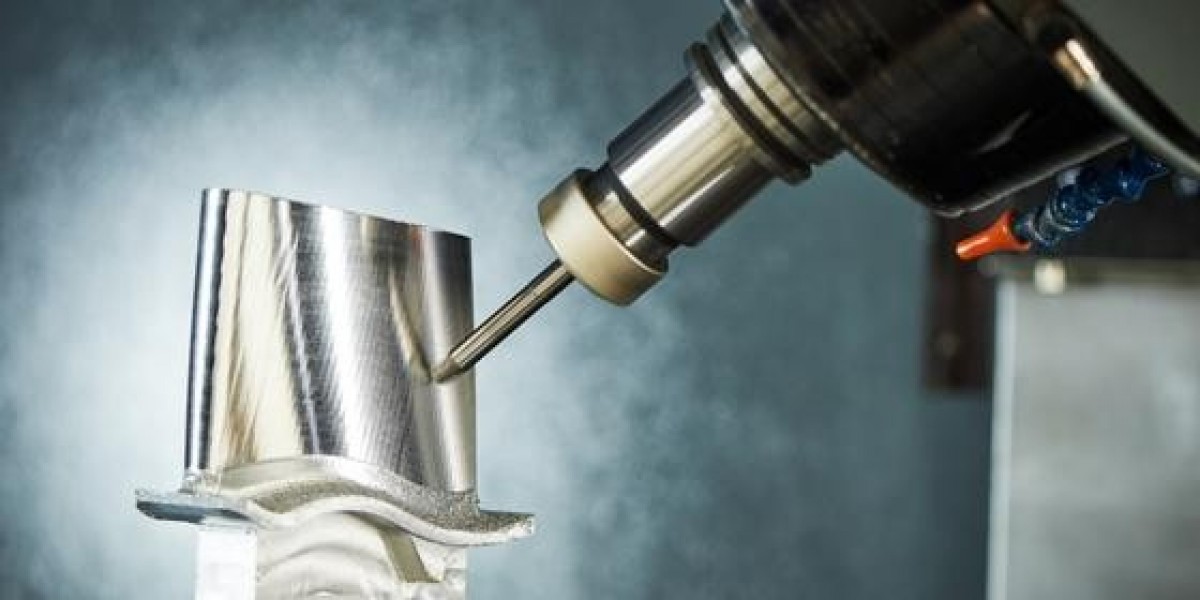When it comes to manufacturing precision parts, one of the most crucial factors that define the quality of a component is its machining surface finish. Whether you are working with CNC machining, 3D printing, aluminum processing, or EDM machining, the quality of the finish can significantly impact performance, aesthetics, and durability. This guide explores various aspects of surface finishing, from types and measurement techniques to applications in different manufacturing processes.
Understanding Machining Surface Finish
The term machining surface finish refers to the texture, smoothness, or roughness of a surface after it has undergone a machining process. This texture is often measured in terms of roughness average (Ra), which determines how smooth or coarse the part’s surface is.
Surface finish is not just about appearance—it plays a key role in:
Functionality: Reducing friction, improving fit, and enhancing wear resistance.
Durability: Preventing premature material degradation.
Aesthetics: Creating visually appealing and professional-looking parts.
Why Machining Surface Finish Matters
In industries like aerospace, automotive, medical devices, and electronics, even the smallest imperfections can cause performance issues. A controlled machining surface finish ensures:
Better sealing in components.
Improved fatigue strength.
Enhanced corrosion resistance.
Consistent quality control.
Factors Affecting Machining Surface Finish
Achieving the right machining surface finish depends on multiple variables:
Cutting Tool Condition – Sharp tools create smoother surfaces, while worn tools increase roughness.
Material Type – Materials like aluminum and titanium respond differently to machining.
Feed Rate and Speed – Too high or too low can affect the surface quality.
Coolant Usage – Reduces heat and prevents tool marks.
Aluminium Surface Finish in Precision Machining
Aluminium surface finish techniques are widely used in automotive, aerospace, and electronics due to aluminum’s lightweight and corrosion-resistant properties. Common finishes include:
Anodizing – Improves corrosion resistance and appearance.
Polishing – For a mirror-like effect.
Bead Blasting – Creates a matte texture.
Getting the right aluminium surface finish often requires a balance between machining precision and post-processing to achieve the desired functional and visual results.
Surface Finish in 3D Printing
Although 3D printing technology has advanced rapidly, printed parts often require post-processing to improve aesthetics and functionality. A 3D printing surface finish can be achieved through methods like sanding, chemical smoothing, or coating.
Key benefits of a good 3D printing surface finish include:
Reduced layer lines.
Improved mechanical performance.
Enhanced part accuracy for assemblies.
EDM Surface Finish for High Precision
Electrical Discharge Machining (EDM) is a non-contact method that uses electrical sparks to shape a part. The EDM surface finish is usually finer than many other processes, making it suitable for tooling and mold manufacturing.
Advantages of EDM surface finish:
Extremely precise tolerances.
Minimal stress on the material.
Excellent for hard metals that are difficult to machine conventionally.
How to Measure Surface Finish
Knowing how to measure surface finish accurately is essential for quality control. There are several methods:
Profilometers – Devices that trace the surface and calculate roughness values.
Optical Methods – Use light reflection to measure surface irregularities.
Comparator Plates – Physical reference plates for quick inspection.
By understanding how to measure surface finish, manufacturers can ensure parts meet strict specifications and industry standards.
Improving Machining Surface Finish: Practical Tips
To achieve the perfect machining surface finish, follow these guidelines:
1. Optimize Cutting Parameters
Adjust feed rate, cutting speed, and depth of cut to balance speed and smoothness.
2. Maintain Tool Sharpness
Regularly inspect and replace worn tools to prevent rough surfaces.
3. Use Proper Coolant
Coolant reduces friction, removes chips, and prevents overheating.
4. Apply Post-Processing Techniques
For certain applications, polishing, grinding, or coating can enhance the final finish.
Machining Surface Finish Standards
There are international standards for machining surface finish, such as ISO 1302 and ASME B46.1. These define measurement methods, symbols, and tolerance ranges, ensuring consistency across industries.
Manufacturers like Zintilon follow these standards to deliver high-quality parts with consistent machining surface finish results.
Comparing Different Surface Finishes
| Process | Surface Finish Quality | Best Use Case | Post-Processing Needed? |
|---|---|---|---|
| CNC Machining | Excellent | Functional and aesthetic components | Sometimes |
| 3D Printing | Moderate (raw) | Prototyping and low-volume production | Often |
| EDM Machining | Very Fine | Tooling, dies, precision molds | Minimal |
| Aluminum Processing | Variable | Aerospace, automotive, electronics | Optional |
This comparison highlights how the machining surface finish varies by process and how post-processing can further enhance the final result.
Future Trends in Surface Finishing
The manufacturing world is constantly evolving, and surface finishing is no exception. Emerging trends include:
Nano-coatings for extreme durability.
Automation in measuring techniques for faster quality control.
Hybrid finishing methods that combine machining with additive manufacturing.
These advancements promise even more precise and consistent machining surface finish results in the future.
Conclusion
A high-quality machining surface finish is critical in producing durable, precise, and visually appealing components. Whether it’s achieving a smooth aluminium surface finish, refining a 3D printing surface finish, or perfecting an EDM surface finish, each method has its role in modern manufacturing.
Knowing how to measure surface finish ensures that the end product meets design requirements and industry standards. As manufacturing technologies continue to advance, mastering surface finishing will remain a key factor in producing world-class components.































